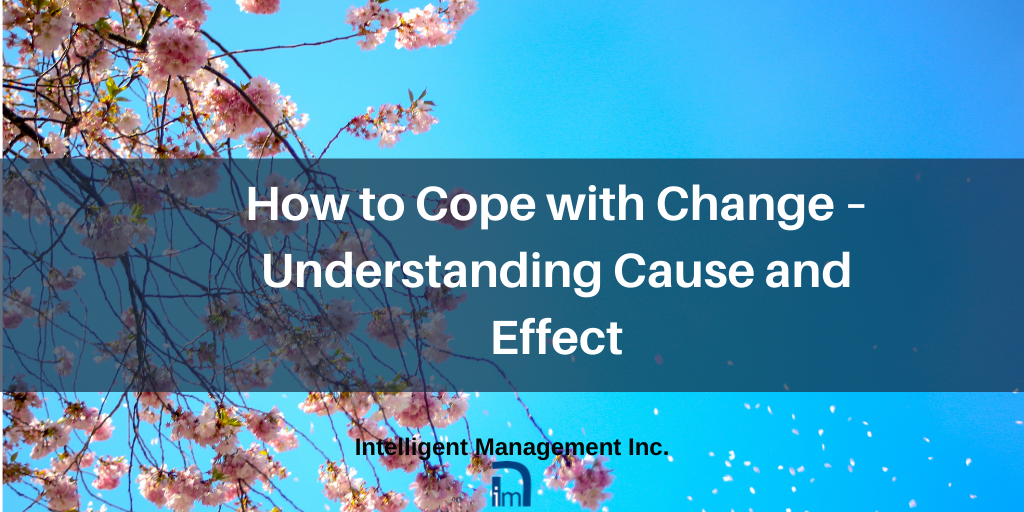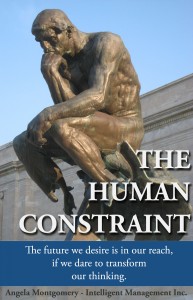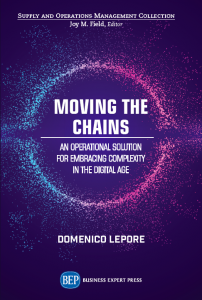
Dr. W. Edwards Deming used to say: “The only thing that does not require maintenance is obsolescence”.
This is a fundamental truth: if we do not evolve, we regress. What makes everything more complicated is the pace at which we must evolve to survive.
Nobody would recommend change for the sake of it. However, our circumstances may become such that either we change or we jeopardize our situation. At Intelligent Management, our perspective is one of continuous improvement. The Decalogue methodology is fuelled by the Deming cycle of Plan, Do, Study, Act, and this is an ongoing process in any organization that embraces the continuous improvement paradigm.
Why Change? Because our reality hurts and we need to something about it
Nobody wants to change when everything is hunky dory. However, when our reality is biting us, it’s a signal that we need to do something. The cycle of Thinking Processes we use with the Decalogue approach to govern the process of change starts by listing the things that are hurting. In the Theory of Constraints these ‘symptoms’ are called Undesirable Effects (UDEs). We may have no desire to change, but the UDEs are a prompt that make us aware of a need to change. The Undesirable Effects we experience are the result of the insufficient or inadequate interactions we have with our personal and/or physical environment.
Thinking Cause and Effect
Dr. W. Edwards Deming used to warn about the consequences (cause and effect) of seemingly simple actions: “if we kick a dog in the street, we are responsible for the attack that, probably out of fear, the dog will take against the next passerby”.
In our lives we are immersed in a network of relations that naturally evolve, whether we like it or not. This evolution will inevitably create some Undesirable Effects for us. Though some people may try, it is ineffective to adopt a ‘whack-a-mole’ attitude to cope with these effects one at a time. The reason for this is that each Undesirable Effect is interconnected as a symptom of an underlying cause. Whether we can do something about the cause or not, we need to change because that cause may in time severely limit our ability to achieve goals that are critical for us. That cause is what is blocking us from achieving more towards our goal. It becomes our constraint, and as Dr. Goldratt used to say, you can ignore the constraint, but it won’t ignore you. We need to learn to understand cause and effect, i.e. to recognize the effects we experience, and link them to their cause.
The ability to reason cause-and-effect is foundational for any meaningful change we decide to bring to our life. It allows us to think more systemically. This is even more so if the change we want to effect concerns a complex entity like a company. A company, like any system, has a constraint, i.e. something that dictates the pace at which it is able to produce throughput. This constraint can be physical, like a machine, or non-physical.
Non-physical constraints
Non-physical constraints are all of those limitations that are created by our mind as a result of past experiences. Some of these constraints are very helpful and make our life possible; restraints can play an extremely important part in our lives just as much as the possibility to lift them when appropriate. These limitations do not belong only to individuals but also to organizations; the field of forces created by the structure of the organization, the paradigms of its founders and directors and the socio-political environment at large do shape these constraints. The issue, for individuals and organizations alike, is not so much the existence of these constraints but rather the acknowledgement that they are such. Unfortunately, far too often, these mind-created constraints become the “reality” of the organization. The life cycle of companies, and even entire industries, can be measured in terms of their appreciation (or lack of it) for these deeply rooted images of the world that over the years we have come to call “cognitive constraints”.
Cognitive constraints
Cognitive constraints are neither connected with (lack of) education, nor with the rational understanding of the debasing role they play in our lives. Simply, our minds adapt very quickly to seemingly “stationary states” and we see moving out of these states as too challenging. In life as well as in business, there is no such a thing as a “stationary state”. We must evolve to survive and we must evolve fast.
For this reason, we need to increase our speed and ability to connect the three faculties of our intellect, Intuition, Understanding and Knowledge, that enable us to develop change through the three phases of What to Change, What to Change To, and How to Make the Change Happen. The transformational process advocated by Deming and Goldratt that is encapsulated in the Decalogue methodology is one where an improved systemic intelligence enables us to see change as an intrinsic part of who we are and what we do. The question is not whether we accept change or not. Change happens. The question is how we cope with change as something intrinsic to what we do. Learning to think systemically helps us to do precisely that.
More from this series on Change:
Why Is Managing Change So Hard and How Can We Make it Easier?
Effective Decision Making? Understand Your Driver Needs First
Decisions and Change: Thinking Processes for a Complex World
Managing Change Effectively with a Systemic Framework and Method
Contact: intelligentmanagement@sechel.ws
SCHEDULE AN INTRODUCTORY CALL WITH US







Leave a Reply